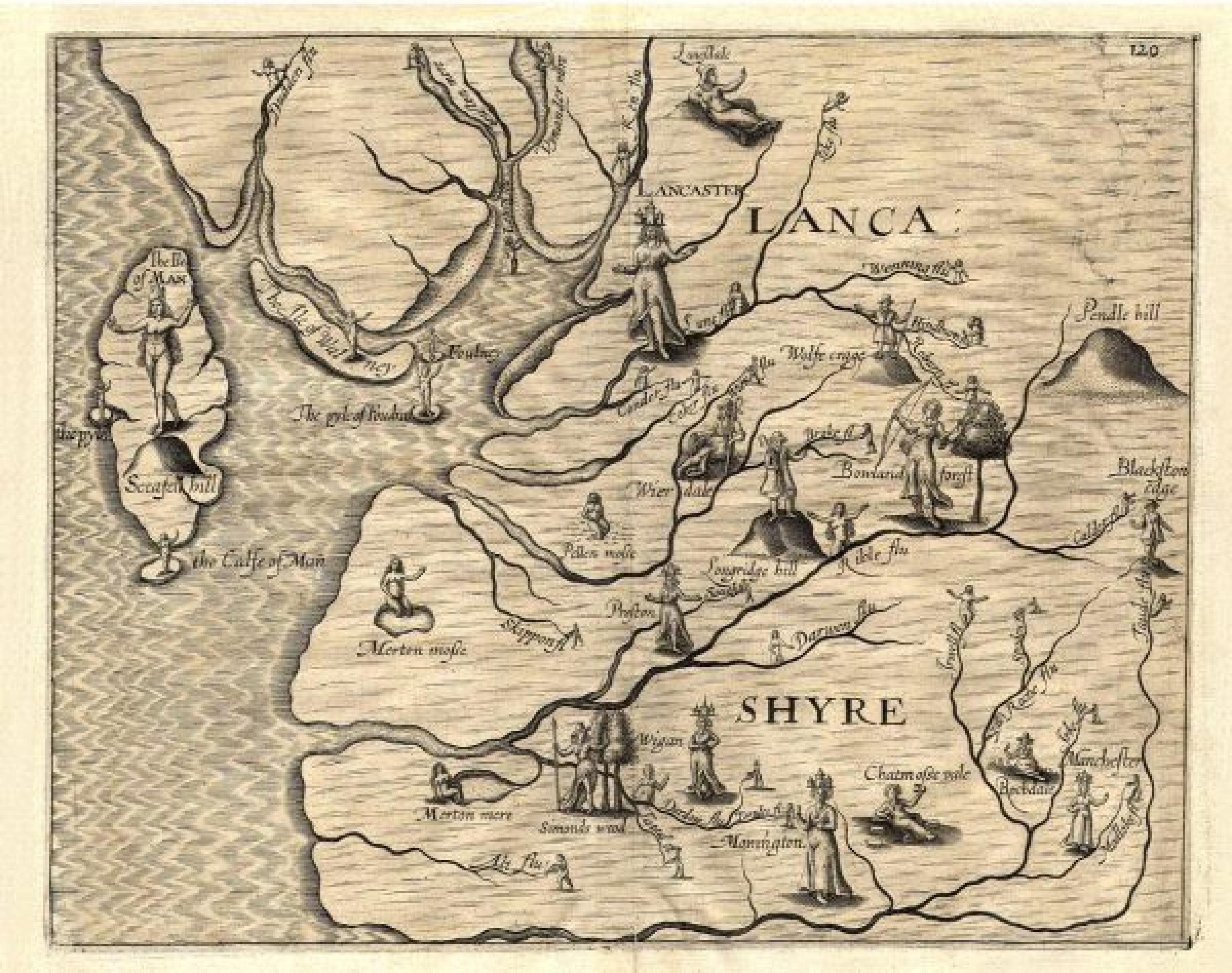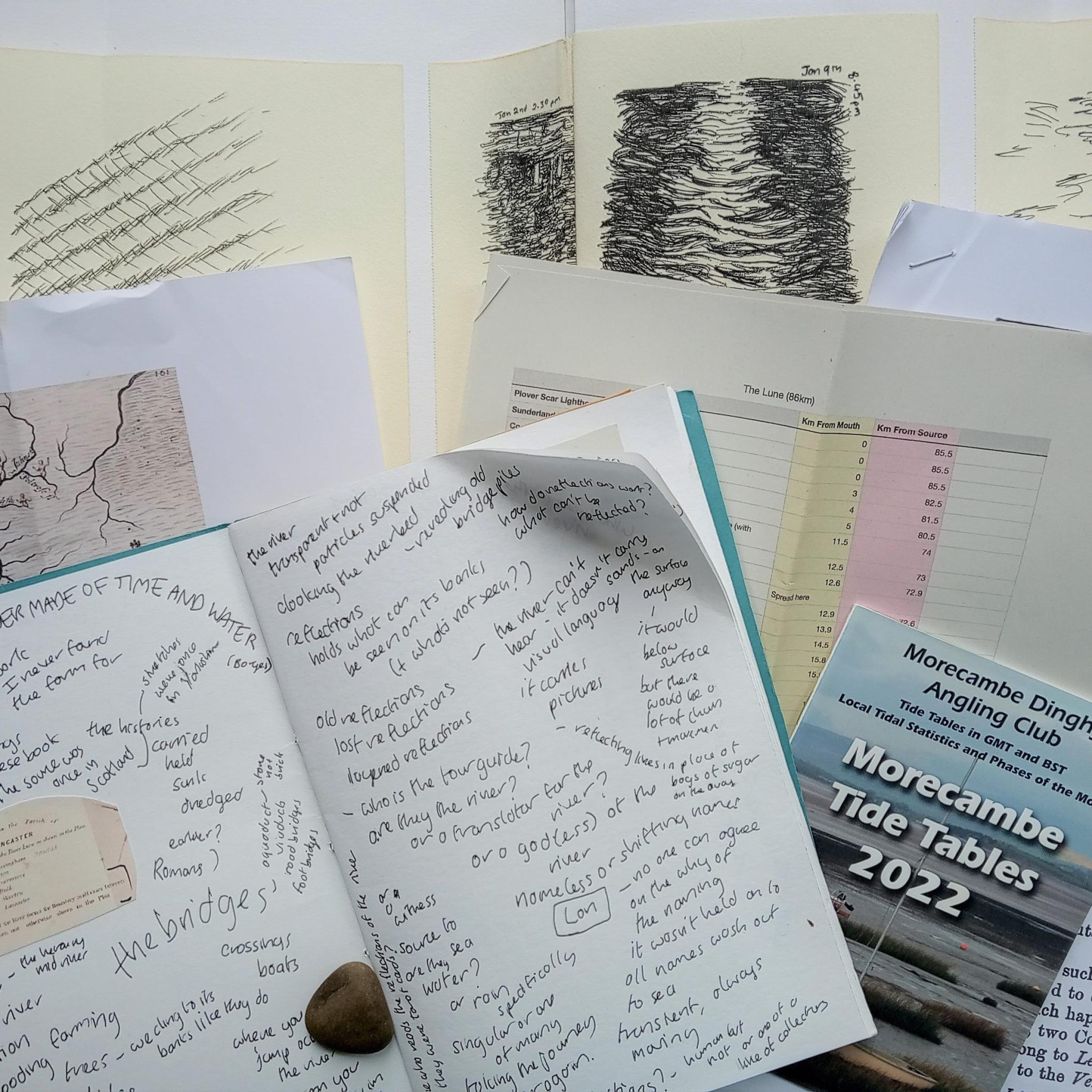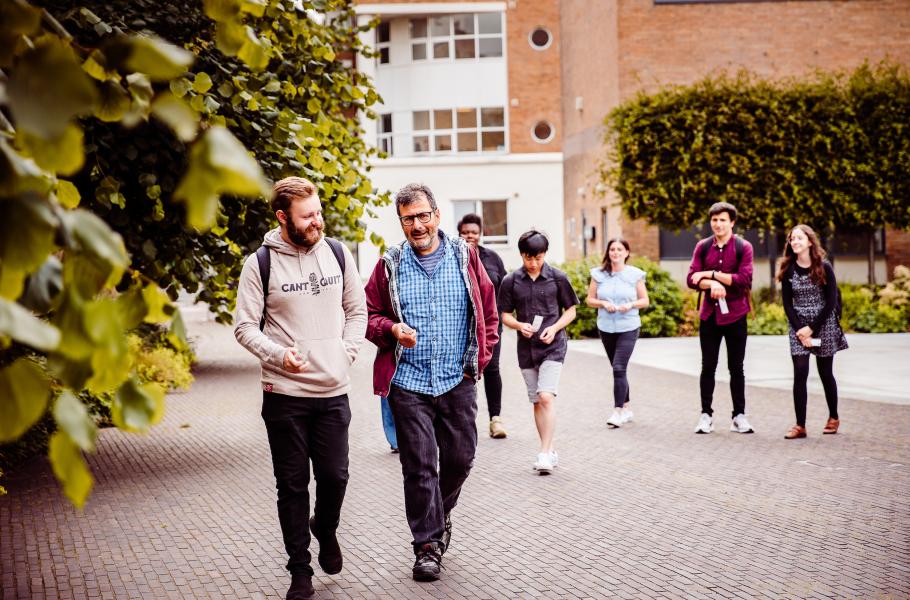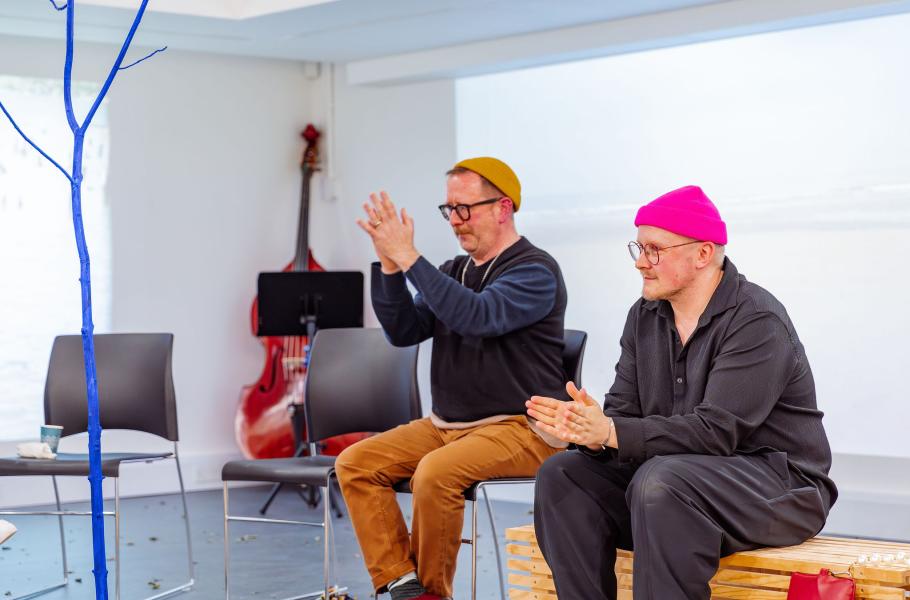Writing a River by Claire Dean (River Tours)
Claire Dean
River Tours is a collaboration with Stan's Cafe theatre company and Lancaster Arts that will take place on the banks of the River Lune on Saturday 15 October. The theatrical tour of the River Lune features a beautiful textile map made by Lancaster's Sewing Cafe, and text by Claire Dean. In this blog Claire discusses her writing process for River Tours.
Book your free tickets to River Tours here.
***
I spent a long time early on in this project searching for the perfect map – a map that would contain the whole river from source to sea; a map that would help me hold the shape of the river in my head, so that I could begin to write about it.

There were old maps that showed past courses of the river, and others that divided the river up for fishing rights with every patch of water given a name. By chance, I was introduced to the maps from Michael Drayton’s 1612 Poly-Olbion, where a colossal woman stands over the Lune carrying the city of Lancaster on her head, but the river itself seems much too short.
OS maps divide the Lune between sheets, so stretches of river that ran along maps I didn’t own were missing. The Sewing Café taped together pages from a road map that climbed diagonally across the floor of their workspace.
I was grateful for the maps in guidebooks and web guides that offered place names and bridge names and intriguing snippets of history, but they wandered footpaths that kept leading me away from the water’s edge.
The Historic England maps could show me where Roman forts lay and historic bridges but I struggled to locate the electricity substation and sewage discharge overflows. And then there were all things that hadn’t been mapped: the wildlife of the river from sea lavender to salmon, dippers to white-clawed crayfish; the roar of clogs on cobbles as the working day ended at Lune Mills; unexpected wonders like the mechanical elephants of Luneside Engineering and the Tebay witch who could transform into a hare.
No single map showed everything I needed to tell the stories of the river. It took a while for me to realise that the map I was searching for didn’t exist and perhaps only could once it had been made for this project.

Mapmaking feels like an attempt to fix a place on paper or screen, and rivers by their nature can’t be pinned down. The Lune is a braided river, which means silt and shingle form islands and channels that shift in shape and are made and unmade over time.
I learned the wooded island by Skerton weir that my children and I longed to cross to when they were younger had once been three islands: Rabbit Ayre, Winny Ayre and Stake Ayre.
We lived in a house right beside the Lune for four years and on autumn mornings at high tide, I’d wake thinking I was in a boat at sea. In summer, when the tide was out, the river was a scrappy trickle between mud, stones and trolleys. I once tried drawing the river every day for a month; it was never in any way the same.
Over the last couple of months, I’ve had the pleasure of seeing the Sewing Café’s map of the river grow and change. Waves have spread along its length; the shades of the seasons have coloured it. Otters have swum into place and bridges now stitch one bank to another.
The narrator of the Lune tour says, ‘You may have thought your banks were the world, but today you will learn that the world is all rivers and it’s the banks that are the in-between’.
The extraordinary map and guide, Orla Cottingham, will invite audiences to explore this world of river. I wouldn’t be surprised if the map took on some of the "tricksiness" of the river and continued to change as the stories are told.
***
Claire Dean is a writer, maker, museum-worker, and all-round research magpie based in Lancaster.




